21 Places to Avoid Sailing Around the World (In Order)
When you plan your sailing trip, it's important to be aware of potential risks in certain areas of the world. These 21 places are dangerous due to piracy, weather conditions, and geographical challenges. To increase your chances of safety, consider bypassing dangerous areas and taking a longer route.
The places to avoid when sailing around the world include Pirate Waters off the Somali Coast, Bermuda Triangle, Drake Passage, Gulf of Aden, North Atlantic Ocean, Indian Ocean's Agulhas Current, Cape Horn, Bering Sea, Bay of Biscay, English Channel, Great Barrier Reef, Strait of Malacca, Mediterranean Sea, and Labrador Sea.
The list also includes Cook Strait, the Pacific Ocean's Kuroshio Current, Sunda Strait, the Cape of Good Hope, the Yucatan Channel, the Barents Sea, and Bass Strait. Though occurrences of piracy have decreased in recent years, you should know the risks and take necessary action wherever you sail; piracy is not exclusive to the waters off the Somali coast.
Summary
- This is not a definitive list; the level of danger can vary depending on various factors such as weather conditions, currents, navigational hazards, piracy, and other environmental factors.
- These places are listed in order of the degree of hazard based on historical records of incidents, anecdotal evidence, and expert opinions on sailing conditions in these areas.
- The Bermuda Triangle is full of intrigue and mystery, as is the Strait of Malacca.
- Cook Strait is beautiful and offers stunning views, but it's best admired from a safe distance.
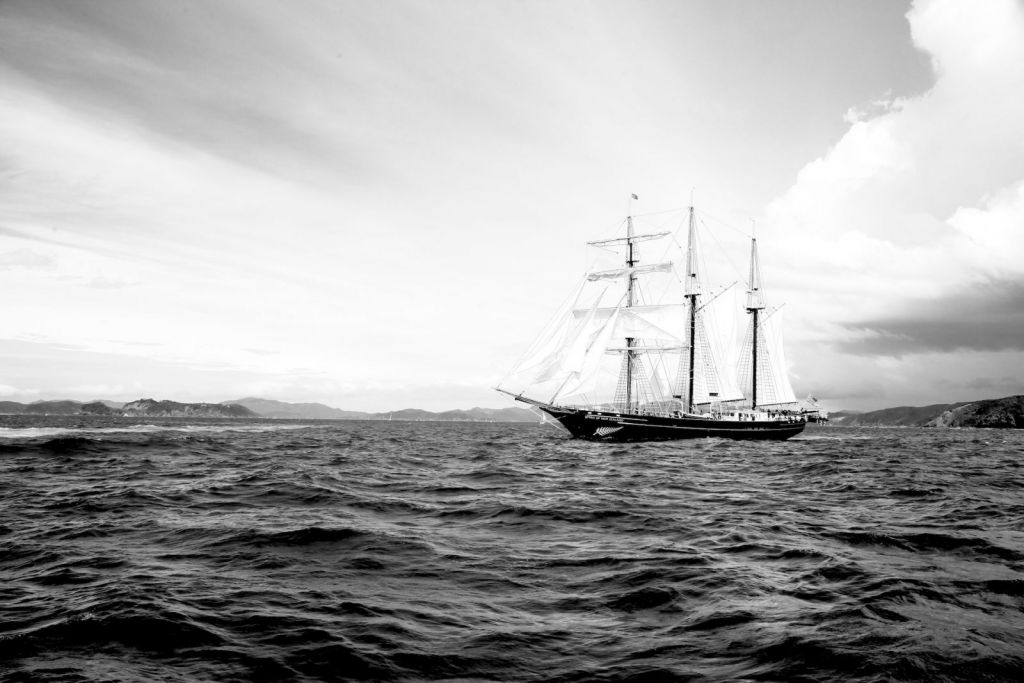
On this page:
- Pirate Waters off the Somali Coast
- The Bermuda Triangle
- The Drake Passage
- The Gulf of Aden
- The North Atlantic Ocean
- The Indian Ocean's Agulhas Current
- Cape Horn, South America
- The Bering Sea, Alaska
- Bay of Biscay, France
- English Channel, UK and France
- The Great Barrier Reef
- The Strait of Malacca
- The Mediterranean Sea
- Labrador Sea, Canada
- Cook Strait, New Zealand
- The Pacific Ocean's Kuroshio Current
- The Sunda Strait, Indonesia
- Cape of Good Hope, South Africa
- Yucatan Channel
- Barents Sea
- Bass Strait, Australia
Pirate Waters off the Somali Coast
You might want to think twice before sailing near the Somali coast, as it's notorious for piracy. Piracy off the coast of Somalia occurs in the Gulf of Aden, Guardafui Channel, Somali Sea in Somali territorial waters, and other surrounding places. The issue has a long and troubled history, with different perspectives from different communities.
The primary reasons for the rise of piracy in these waters include political instability, poverty, and a lack of employment opportunities for the locals. Somali pirates have targeted vessels ranging from large cargo ships to smaller fishing boats.
While you're navigating these treacherous waters, keep the following tips in mind:
- Stay vigilant: Always keep a lookout for suspicious boats or activity.
- Maintain a safe distance: Keep a wide berth from the Somali coast and avoid areas known for pirate attacks.
- Follow maritime security guidelines: Stay updated with current security measures and follow guidelines set by international organizations and governments.
The Bermuda Triangle
The Bermuda Triangle is a mysterious region in the North Atlantic Ocean where over 50 ships and 20 airplanes have mysteriously disappeared. When you're planning your sailing adventure, it's essential to keep in mind some of the potential dangers associated with this area.
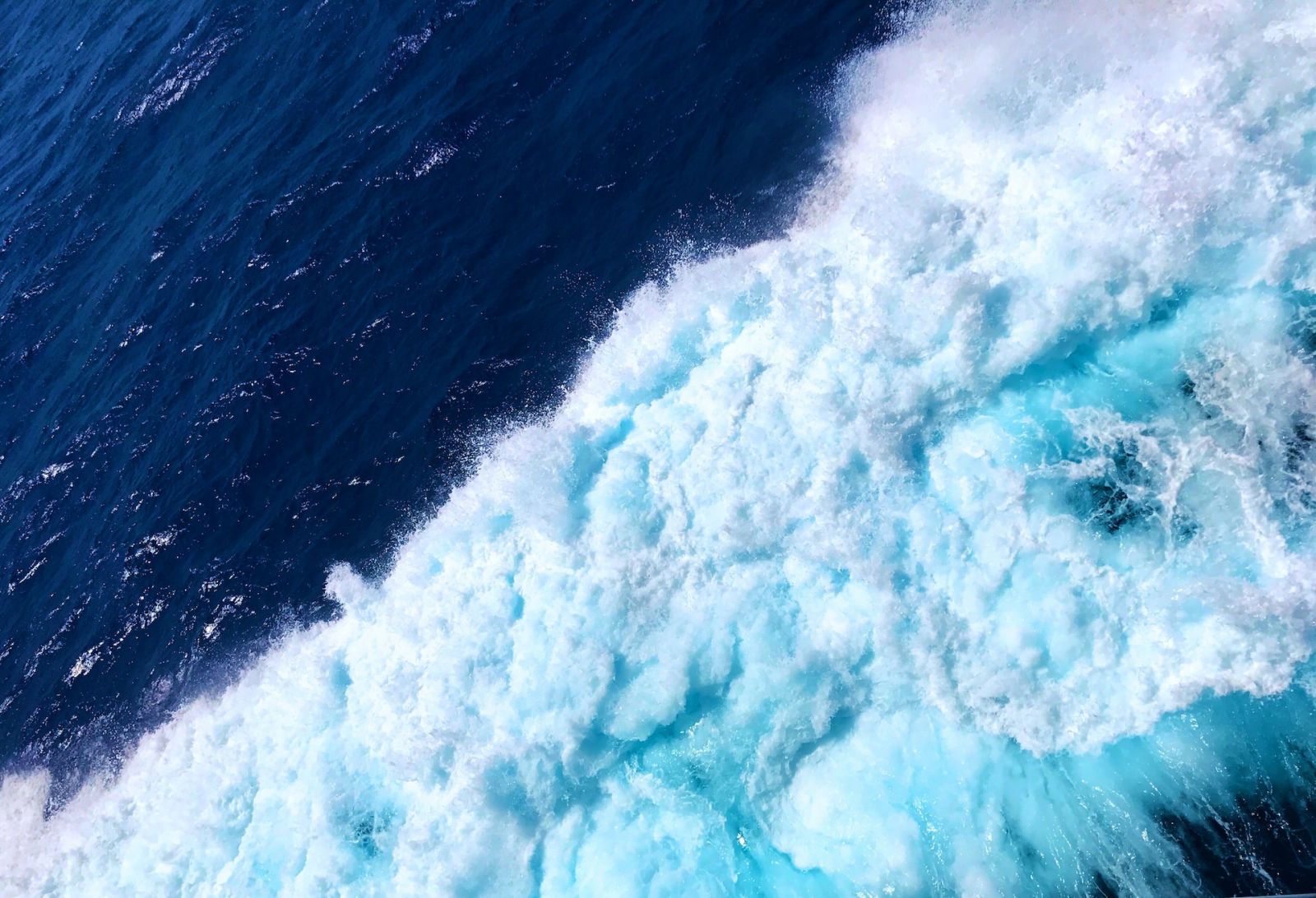
Firstly, the Bermuda Triangle is known for extremely violent and unexpected storms. These storms can build and dissipate quickly, making sailing in this region unpredictable and hazardous. As a sailor, you need to be aware of the ever-changing weather conditions and always keep an eye on the forecast.
Another concern is the Intertropical Convergence Zone (ITCZ) that runs through the Bermuda Triangle. This area can pose challenges for sailors due to its calm and erratic weather conditions. It's crucial to be well-prepared for these conditions and have a solid understanding of how they can impact your trip.
Lastly, while the Bermuda Triangle may have a notorious reputation for mysterious disappearances, it's important to remember that many of these incidents remain unexplained and that not all sailors experience trouble traveling through this region. It's wise to exercise caution and be well-prepared for any unexpected situations.
When sailing, you'll come across some regions with unpredictable weather patterns. Storms, heavy rain, and squalls can appear without notice, leading to rough seas and challenging sailing conditions. It's essential to regularly monitor weather updates and be prepared to adjust your course as needed. Always make sure to keep safety gear on board, and know how to reef quickly if conditions worsen.
The Drake Passage
If you're an adventurous sailor, you might be tempted to sail through the infamous Drake Passage. However, you should avoid this area if you're not an experienced sailor due to its notoriously rough conditions.
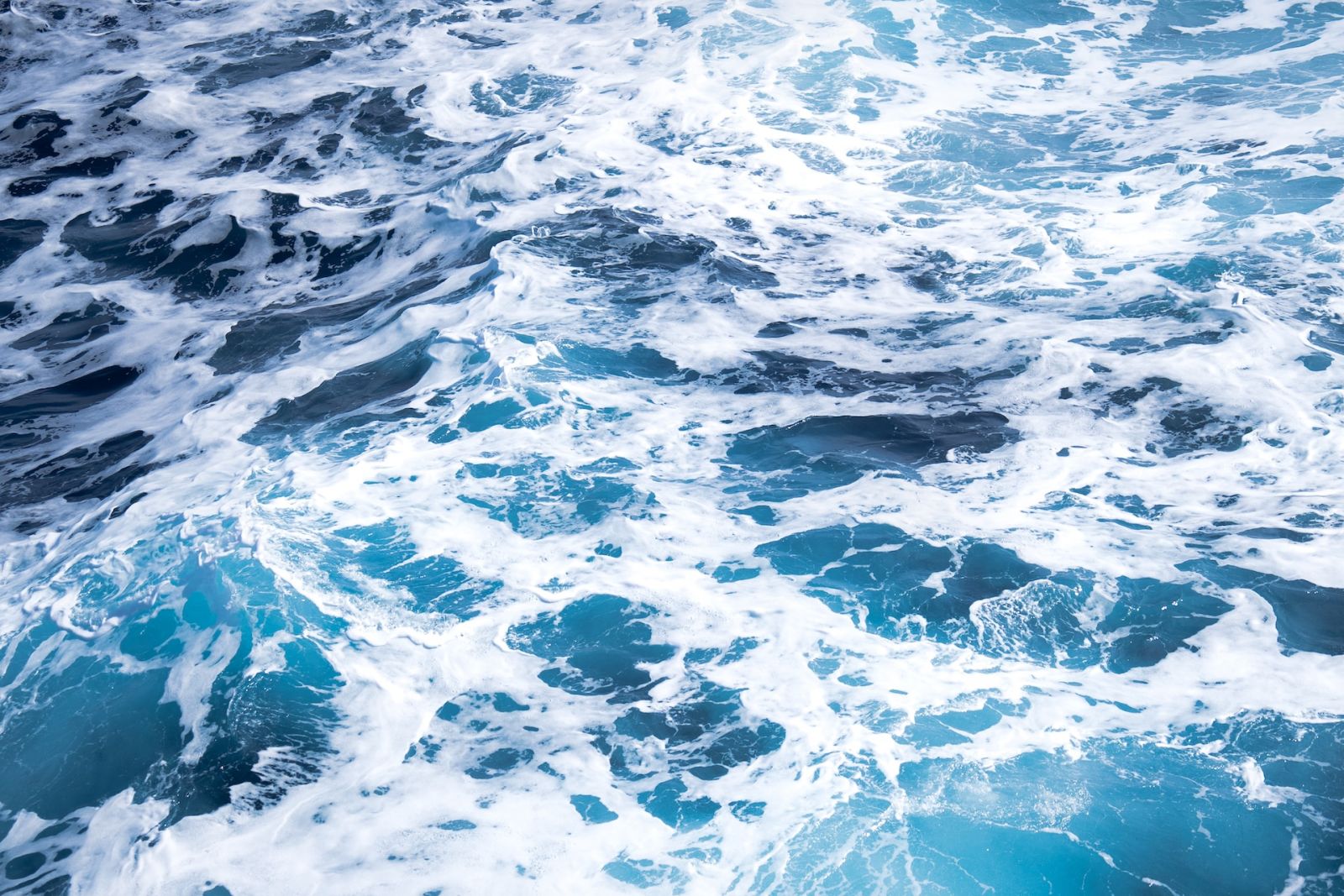
The Drake Passage, located between Cape Horn in South America and the South Shetland Islands in Antarctica, is where the Atlantic, Pacific, and Southern Seas converge. Due to the lack of nearby landmasses, the currents in this region meet with no resistance, resulting in some of the choppiest waters in the world.
To make matters worse, the unpredictable weather found in this region adds to the challenge of navigating the passage. You can expect strong winds, huge waves, and rapidly changing conditions, making it all the more difficult to maintain control over your vessel.
You should take solace in knowing that many cruise ships sail through the Drake Passage on their way to Antarctica, thanks to their size and advanced stabilizing technology. However, even the most seasoned sailors know to tread cautiously when taking on this notorious body of water.
The Gulf of Aden
Sailing through the Gulf of Aden can be quite challenging due to the risk of piracy in the region. This body of water is located between Yemen and Somalia, and it's notorious for its high rate of piracy incidents.
During your journey, it's crucial to be vigilant and cautious at all times. You should avoid sailing close to the coast, as this is where most pirates typically operate. Instead, stick to the more populated waters, where there's a higher chance of encountering other vessels that can provide assistance in case of an emergency.
When sailing in this area, it's a good idea to have a security plan in place. Register your yacht with the Maritime Security Centre to receive updates and guidance on the latest piracy threats. Additionally, ensure your communication equipment is up-to-date and functional, allowing you to maintain contact with authorities and other vessels if needed.
Finally, keep a low profile while sailing the Gulf of Aden. Avoid displaying valuable items and luxury amenities that could attract potential pirates. By following these basic precautions and maintaining a friendly and approachable attitude, you can significantly reduce the risk of encountering piracy issues during your journey.
The North Atlantic Ocean
The North Atlantic Ocean can be challenging for sailors, but with proper planning and knowledge of the areas to avoid, you can significantly increase your safety. Here are a few treacherous areas in the North Atlantic that you should steer clear of while sailing.
The Bay of Biscay is known as the "Valley of Death" among sailors because of its violent storms and rough seas. This region lies along the west coast of France and the north coast of Spain, and its weather is influenced by the intersection of the low-pressure area of the North Sea and the high-pressure areas of the Azores High.
Another area to be cautious of is the Gulf of Guinea, situated between Cape Lopez in Gabon and Cape Three Points in the Western Ghana region. It has become one of the most dangerous places to sail due to piracy.
When sailing the North Atlantic Ocean, it's essential to pay attention to the weather conditions and be prepared for unexpected changes. One way to keep yourself and your crew safe is to plan your route along the equator, where you can find the most reliable sailing weather and calmer waters.
The Indian Ocean's Agulhas Current
The Agulhas Current, a powerful oceanic force, deserves a top spot on your list of places to avoid sailing. Flowing southward along the east coast of Africa, this warm ocean current presents hazardous challenges for even the most seasoned sailors. To help you understand why it's essential to steer clear of this area, let's delve into the key reasons.

Firstly, the velocity of the Agulhas Current is notorious for reaching up to 2 meters per second (7.2 km/h). This rapid speed creates accelerated waves, making it difficult for your vessel to maintain stability and control. Moreover, the force generated by the current can dramatically impact your progress, significantly increasing your voyage's duration.
Next, the interaction between the Agulhas Current and South Atlantic weather systems often results in powerful storms and rough sea conditions. When sailing through this region, you may encounter intimidating waves, powerful winds, and treacherous swells. It is crucial to keep in mind these risks, as they can adversely affect your safety and comfort on board.
Another reason to circumvent the Agulhas Current is its role in global ocean circulation. The Agulhas system connects the Indian Ocean with the Atlantic, forming a major component of the global conveyor belt of circulating ocean waters. As you traverse this area, you'll face unpredictable water movements and unexpected changes in sea conditions.
In addition to current-related hazards, the waters surrounding the Agulhas Current are home to an abundance of marine life. While spotting dolphins and whales might be an exciting prospect, these sea creatures can pose a collision risk for your vessel.
While encountering fascinating marine life can be an exciting aspect of sailing, some sea creatures can pose a considerable danger. Sharks, jellyfish, or sea snakes are just a few examples of creatures you need to be vigilant about. Keep a safe distance from potentially dangerous species, and educate yourself on the prevalent wildlife in the areas you plan to sail. Learning about their behavior and precautions will help protect you and your crew from any harm.
Cape Horn, South America
If you're planning your next sailing adventure, it's essential to be aware of some of the most dangerous places to sail. One such location is Cape Horn, South America, the southernmost headland of the Tierra del Fuego archipelago in Chile. It's a place where the Atlantic and Pacific Oceans meet, and is notorious for its treacherous waters and fierce weather.
When sailing around Cape Horn, you'll face unpredictable winds and merciless seas, which can challenge even the most experienced sailors. Since its first successful navigation in 1616, the journey around Cape Horn has claimed numerous lives, earning it a formidable reputation among seafarers.
To mitigate some of the risks involved in sailing around Cape Horn, many seasoned sailors recommend taking a clockwise route. This approach involves heading upwind and upcurrent from the Caribbean until you reach the eastern tip of Brazil, before setting your course for the Beagle Channel.
Timing is also crucial when navigating Cape Horn. It's generally safer to make the journey during the Chilean summer months of December to February, when temperatures are more favorable, and storm activity tends to be more manageable.
The Bering Sea, Alaska
As you plan your sailing adventures around the world, it's crucial to be aware of the challenges that come with navigating certain regions. When reaching the northern seas, be cautious when approaching the Bering Sea in Alaska.
The Bering Sea is named after Vitus Bering, a Danish navigator in Russian service who was the first European explorer to venture there in 1728. It is situated between Alaska and Russia and is known for its stunning landscapes and rich marine life. However, sailing through these waters can be hazardous due to their harsh climate and treacherous weather conditions.
Sailors in the Bering Sea face unpredictable weather, including storms and periods of dense fog. These factors can make navigation and communication difficult, increasing the risk of accidents or getting lost. To ensure a safer journey, always prepare for extreme conditions by equipping your boat with the necessary safety gear and up-to-date technology.
In addition to the severe weather, the Bering Sea is known for its dense ice formations. Icebergs and floating ice can pose serious threats to vessels, as they can cause significant structural damage upon collision. When sailing in these waters, always maintain a lookout for ice and adjust your course accordingly.
Lastly, the Bering Sea is home to a thriving fishing industry, with many fishing vessels operating in the area all year. Be mindful of their presence, as they might not be easy to spot amidst the waves and fog. Maintaining proper watch and communication with other boats in the area can help reduce the risk of collisions.
Navigating challenging waters sometimes can be tricky even for experienced sailors. Narrow passages, busy waterways, and shallow depths are some obstacles you may face. To handle these situations effectively, familiarize yourself with charts, electronic navigation tools, and local knowledge before setting sail. Invest time in mastering seamanship skills, and if needed, consider seeking assistance from a seasoned sailor or professional adviser during challenging navigations.
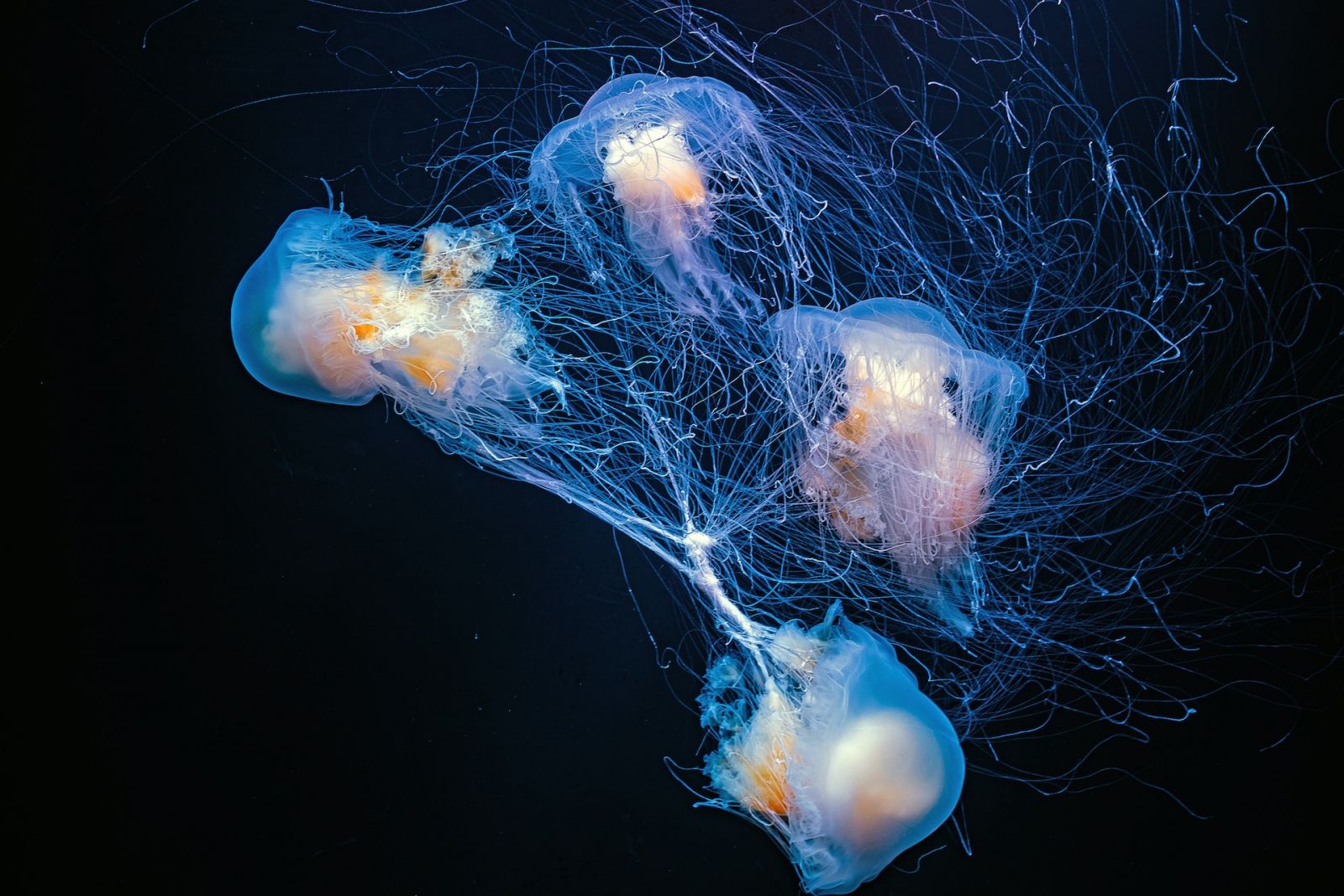
Bay of Biscay, France
The Bay of Biscay is a notorious sailing area located off the coast of western France and northern Spain. As a sailor, you may experience some challenging conditions while crossing this body of water due to its unpredictable weather and rough seas.
One reason for the treacherous conditions in the Bay of Biscay is the jet stream, which can cause strong wind patterns and frequent changes in the weather conditions. While sailing through the bay, you may encounter everything from calm waters to ferocious storms in only a matter of hours.
The location of the bay, as well as its depth, also contribute to the notorious reputation of this area. With no major landforms to slow down the incoming swells from the Atlantic Ocean, the waves can build up in height and intensity, creating a hazardous sailing environment.
When sailing across the Bay of Biscay, it's crucial that you keep weather forecasts in mind and have a well-prepared crew and vessel. One helpful piece of advice is to choose the best season for your trip, typically between May and September, as the weather tends to be more stable during this period.
English Channel, UK and France
The English Channel can present a challenge for sailors. It is a tide-swept area crowded with commercial and leisure traffic and subject to occasional poor weather conditions. However, with proper preparation and knowledge, you can safely navigate this part of your journey.
One factor to consider when sailing the English Channel is the strong tidal currents. Make sure you plan your route and timing carefully to avoid being caught in adverse conditions. Keep an eye on the weather forecasts and be prepared to adjust your plans if necessary.
Another issue to be aware of is the increase in migrant boats crossing the Channel. While this may not directly impact your sailing experience, it is worth being aware of the situation and keeping up-to-date with any relevant news or official advice to ensure a smooth journey.
The Great Barrier Reef
The Great Barrier Reef, located off the northeastern coast of Australia, is an awe-inspiring natural wonder. However, as a sailor, you should be cautious when navigating around this area. The reef spans over 2,300 kilometers (1,429 miles) and is home to a staggering 9,000 known species. Despite its beauty, there are reasons to avoid sailing too close to the Great Barrier Reef.
One crucial reason is the delicate state of the reef. Climate change poses a serious challenge to its health, and as a responsible sailor, you should minimize your impact on this vulnerable ecosystem. The consequences of straying too close may harm the reef and the abundance of wildlife that depends on it for survival.
Another concern is navigation safety. The reef is comprised of a complex maze of shallow waters, coral outcrops, and hidden obstacles. This makes it a challenging place to sail, even for experienced sailors. By keeping a safe distance from the Great Barrier Reef, you'll protect your vessel and the precious marine environment.
To stay informed while cruising near the reef, make use of available resources such as nautical charts, reef monitoring platforms, and local authorities. These resources will help you stay up-to-date on any potential hazards and provide guidance on how to protect this natural wonder.
The Strait of Malacca
When you're planning your sailing adventures, it's important to be aware of some potentially risky regions to navigate. One such area is the Strait of Malacca, a narrow waterway connecting the Andaman Sea (Indian Ocean) and the South China Sea (Pacific Ocean). It stretches for 500 miles (800 km) in length and varies in width between 40 to 155 miles (65-250 km).
As a key shipping route that links the Indian and Pacific Oceans, this strait sees a vast amount of trade pass through its waters. The high volume of traffic can often lead to congested and challenging navigation conditions, particularly since the strait is quite narrow in some places. You should be cautious when sailing here, as incidents can occur due to the volume of vessels and many natural obstacles that can impede your progress.
Another reason to be cautious while sailing in the Strait of Malacca is the risk of piracy. In the past, this area has experienced a significant number of piracy incidents, although efforts have been made to improve maritime security. Staying vigilant and keeping your distance from unknown vessels, as well as monitoring relevant advisories can help keep you and your crew safe.
Additionally, the unique geography of the region, such as shallows and reefs, makes it vital for you to be well-prepared and possess updated charts when navigating here. Prudent planning ensures that you avoid these hazards and protect your boat from potential damage.
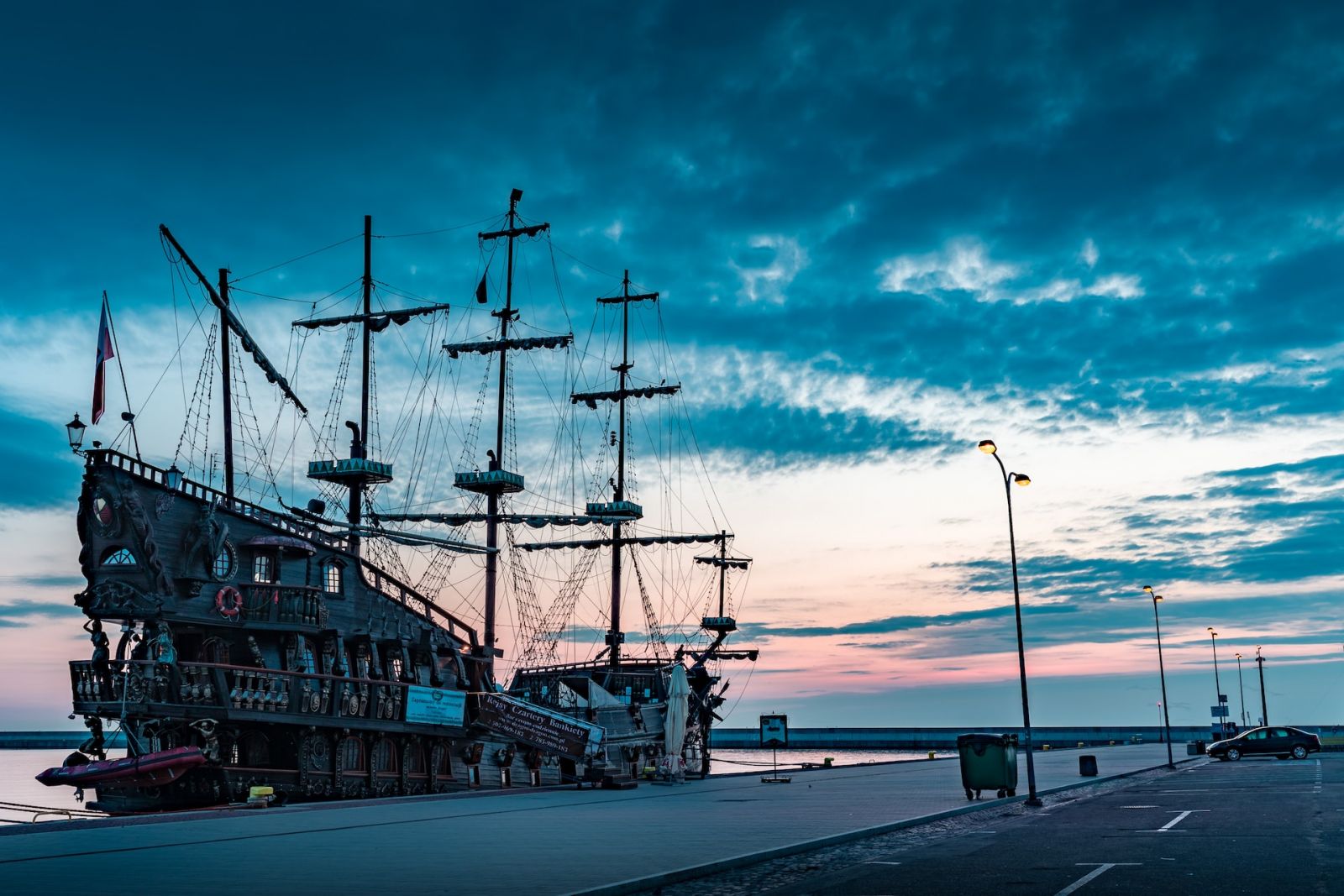
The Mediterranean Sea
Sailing in the Mediterranean Sea can be a beautiful and unforgettable experience. However, there are a few areas you should avoid during your journey. In order to have a safe and enjoyable trip, it's important to be aware of potential dangers and follow the advice of experienced sailors.
One area to avoid is the Bay of Biscay, which lies along the west coast of France and the north coast of Spain. Known by sailors as "the Valley of Death," it's famous for its violent storms and rough seas due to the intersection of various weather fronts. Keep this area in mind when planning your route, and make sure to monitor weather forecasts and conditions before embarking.
Another Mediterranean spot to be cautious about is the eastern part, particularly the waters around Syria, Lebanon, and Israel. While the waters themselves might not be inherently dangerous, the geopolitical situation and tensions in these areas can lead to potential hazards. It's wise to avoid any military zones and keep an eye on current events before setting sail.
Piracy is another factor to consider when looking at places to avoid in the Mediterranean. While it's not as prominent as in the Gulf of Aden or the Red Sea, piracy incidents have been reported in recent years, especially near the coasts of Algeria, Libya, and Egypt. To minimize the risk of piracy, sail further away from the coastlines and stay updated on any reported incidents in the region.
Labrador Sea, Canada
If you're looking for a sailing adventure, you might want to rethink including the Labrador Sea in your itinerary. This body of water, located between Greenland and the coast of Labrador, is known for its unpredictable and often treacherous conditions.
The Labrador Sea is one of the few places where oxygen from the atmosphere is transferred to the deepest parts of the ocean. This unique characteristic contributes to its choppy waters and potential hazards. Sailing in this area requires a great deal of caution, as you'll need to remain vigilant for rapidly changing weather conditions and other potential risks.
Navigating the Labrador Sea also means facing the possibility of encountering icebergs. Icebergs can be found at around 60° north latitude during the summer months, coming from Northern Canada and heading towards Southern Greenland, Iceland, and the North and Baltic Seas. As you can imagine, colliding with an iceberg can result in severe damage to your vessel and could be life-threatening.
Additionally, the Labrador Sea is known for its strong currents, such as the West Greenland Current and the Labrador Current. These currents can be difficult to navigate, even for experienced sailors. The West Greenland Current carries warmer water, while the Labrador Current brings cold, ice-laden water from the Arctic.
Cook Strait, New Zealand
When sailing around the world, it's wise to steer clear of certain areas, one of which is the Cook Strait in New Zealand. This body of water, which separates the North and South Islands of New Zealand, is notorious for its treacherous conditions and strong currents.
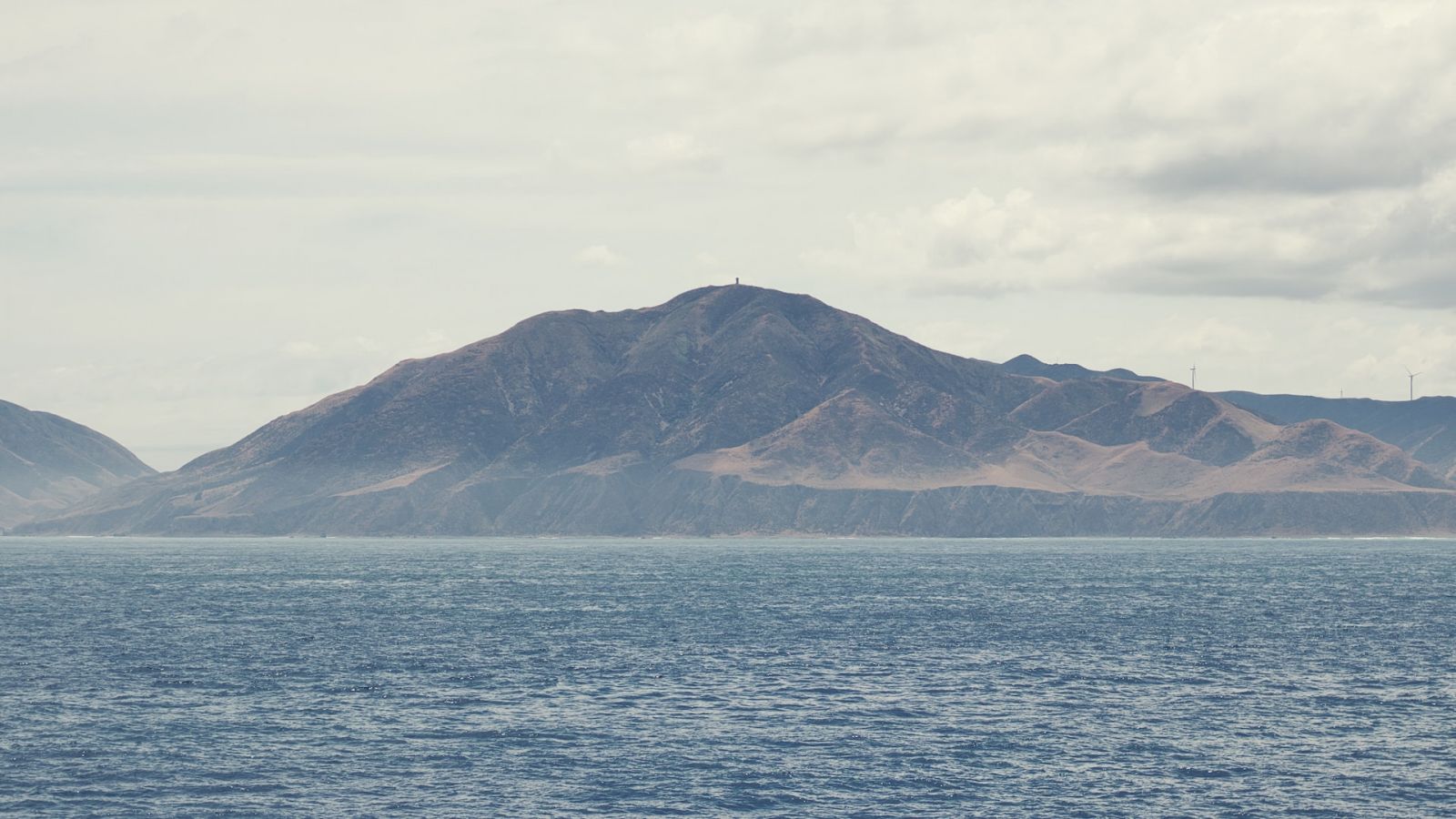
The reason for the Strait's fearsome reputation lies in its unique geographical features. As the only gap between the mountainous North and South Islands, it acts as a giant wind tunnel. This results in extreme wind conditions, especially when the prevailing westerly winds are funneled through the Strait.
In addition, the tide and wind effects in Cook Strait can be fierce. The strong tides create powerful currents that can be difficult for even experienced sailors to navigate. Furthermore, the wind against the tide can make for exceptionally rough waters, which only adds to the difficulty of sailing through this region.
It's essential to assess both your vessel and the weather conditions before attempting to cross Cook Strait. Ensure that your boat is suited to handle the harsh environment, and always stay updated on the latest weather forecasts.
The Pacific Ocean's Kuroshio Current
The Kuroshio Current, also known as the Black or Japan Current, is a warm ocean current that travels northward on the west side of the North Pacific Ocean basin. Its deep blue waters can make it a beautiful sight, but it's best to avoid sailing near this current due to its strong, unpredictable nature.
When you're out at sea, one of the challenges of the Kuroshio Current is its converging with the colder Oyashio Current near Hokkaido, Japan. This convergence of different temperatures and densities often creates eddies, swirling waters along the edges of the two currents that can be tricky to navigate.
In addition to its powerful pull, the Kuroshio Current has a history of carrying ships away from Japan. In some cases, vessels have been pushed as far as Hawaii or even North America, thanks to an extension of the current. As a sailor, it's crucial to be aware of your location and the direction of prevailing currents to ensure you don't accidentally get caught in the Kuroshio's powerful grip.
To deal with the challenges of the Kuroshio Current, always:
- Monitor your position: Frequently check GPS, maps, and other navigation tools to understand your whereabouts relative to the current.
- Avoid sailing too close: Keep a safe distance from the current's edge to minimize the risk of being swept away.
- Stay informed: Regularly check weather forecasts and oceanic conditions, as the Kuroshio's behavior can change with atmospheric patterns.
The Sunda Strait, Indonesia
Navigating through the Sunda Strait can be a significant challenge. This strait lies between the islands of Java and Sumatra, connecting the Java Sea with the Indian Ocean. With a minimum width of around 24 km and a minimum depth of just 20 meters, you might consider this a risky location for sailing.
The narrow and shallow eastern part of the strait adds to the difficulty of maneuvering your boat. To make matters worse, the western part consists of deeper waters, which could lead inexperienced sailors into dangerous situations. It's essential to tread carefully and stay vigilant while attempting to sail through the Sunda Strait.
You should also keep in mind the potential for natural disasters. In 2018, a devastating tsunami struck the Sunda Strait without any warning, resulting in the loss of hundreds of lives and displacing tens of thousands of people. While tsunamis are not a frequent occurrence, it's essential to be aware of the risk they pose to sailors in this region.
Finally, the Indonesian government has advised boats to stay clear of the Sunda Strait after the 2018 tsunami, adding further reason to approach this area with caution. When sailing in this part of the world, it's vital that you follow local guidelines and remain attentive to changing conditions.

Cape of Good Hope, South Africa
The Cape of Good Hope, located at the southern tip of Africa, is one of those places where you might want to be extra cautious when sailing. This infamous cape has earned a reputation as one of the world's most treacherous waters, due to its unpredictable weather conditions.
While traversing the Cape of Good Hope, you might experience intense storms and powerful winds, which create enormous swells and rough seas. Additionally, it's not uncommon to encounter aggressive currents and whirlpools, which can make navigation quite challenging even for experienced sailors.
To ensure your safety, it's important to stay vigilant, maintain regular communication with local maritime authorities, and constantly monitor weather forecasts. Having a well-prepared crew and updated safety equipment on board is essential as well. The risks might be high, but successfully sailing around the Cape of Good Hope can provide you with an exhilarating and unforgettable experience.
Despite the hazards, this region is also known for its stunning landscapes and incredible wildlife. When you visit the Cape of Good Hope, it allows you to witness one of the most beautiful coastal areas in the world. Just remember to approach these waters with caution and respect, and enjoy the challenge of conquering this legendary cape.
Yucatan Channel
The Yucatan Channel can be a tricky area to navigate. The passage lies between Mexico and Cuba, connecting the Caribbean Sea with the Gulf of Mexico. With a depth of nearly 2,800 meters (9,200 feet) near Cuba, it's not the shallowest area for sailing.
One of the concerns when sailing through the Yucatan Channel is the strong Yucatan Current flowing between these two significant water bodies. This current can create challenging conditions for sailors, as it generates swirling eddies and powerful flows. You need to maintain control of your boat at all times and be prepared for unexpected shifts in the water.
When crossing the Yucatan Channel to Mexico, the distance is a little over 100 miles, which might not seem like much, but the Gulf Stream crossing adds another layer of stress to the passage. Weather conditions can vary rapidly in the area, so it's essential to keep an eye on the forecast and be prepared to adjust your course or plans accordingly.
While sailing through the Yucatan Channel, keep these tips in mind:
- Monitor weather forecasts and adjust your plans when needed.
- Be prepared for strong currents and eddies.
- Remain vigilant and maintain control of your boat.
Barents Sea
The Barents Sea is one of those places you may want to think twice before sailing. Although the southern half of the Barents Sea tends to remain ice-free year-round due to the warm North Atlantic drift, this doesn't mean that conditions are always favorable for sailing.
You should be aware that the Barents Sea is one of the most productive oceanic areas in the world, housing around 20 million seabirds in summer. This makes it a vital region for various marine species and the Norwegian fishing industry. That said, navigating through the waters of this sea might pose some challenges, especially if you're unfamiliar with the region.
Another factor to consider is that the Barents Sea is situated in the Arctic region. This means that weather conditions can change rapidly, making it difficult for sailors to anticipate and react accordingly. With strong winds and rough seas, unexpected storms can put you and your vessel at risk.
To ensure your safety while sailing in this region, it's essential to have a good understanding of the local weather patterns, marine life, and the unique challenges you might face. Be well prepared with adequate equipment and an experienced crew, and regularly monitor the weather forecasts to avoid any unpleasant surprises.
Bass Strait, Australia
While planning your sailing adventures, it's important to be cautious of certain locations known for their challenging sailing conditions. One such destination to be aware of is the Bass Strait, located between mainland Australia and Tasmania.
The Bass Strait is notorious for its rough waters and unpredictable weather. Many sailors consider this area to be one of the most dangerous stretches of water in the world. As a result, it's essential to plan your voyage carefully, taking into account appropriate timing and weather forecasts.
Be prepared for strong winds and rapidly changing conditions. It's not uncommon to experience sudden shifts in wind direction and intensity, which can make navigating this area particularly challenging. You'll want to ensure that your vessel is equipped to handle these tough conditions and that you have the necessary skills to cope with any surprises the Bass Strait may present.
Due to its location, the Bass Strait is also known for its cool temperatures. Make sure you have appropriate clothing and personal gear to keep you warm and dry, even if the weather takes an unexpected turn.
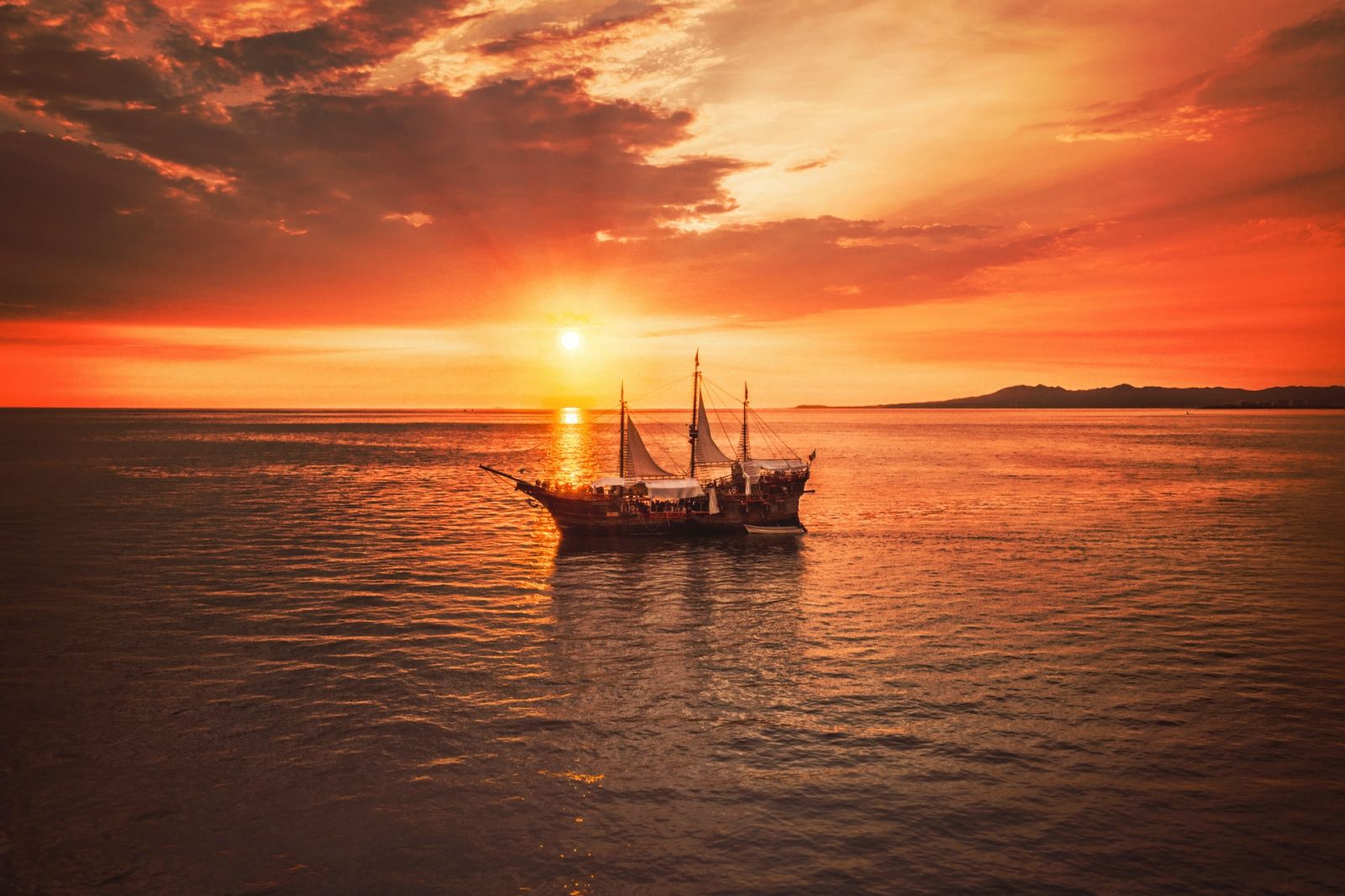
Other places you should avoid sailing are:
-
The Red Sea: The Red Sea can be dangerous to sail due to strong currents, unpredictable weather conditions, and navigational hazards such as reefs and shoals. The area has also been known to have incidents of piracy.
-
The Cyclones of the South Pacific: The South Pacific is known for its tropical cyclones, which can be extremely powerful and destructive. These cyclones can cause strong winds, heavy rains, and storm surges, making sailing in the area dangerous.
-
The Beaufort Sea: The Beaufort Sea can be dangerous to sail due to harsh weather conditions, including strong winds, freezing temperatures and icebergs. The area is also known for its unpredictable weather patterns, which can make navigation difficult.
-
Sable Island: Sable Island can be dangerous to sail due to treacherous currents, shifting sand dunes, and navigational hazards such as submerged rocks and sandbars. The area has also been known to have incidents of shipwrecks.
-
The Maldives: The Maldives can be dangerous to sail due to strong currents, unpredictable weather conditions, and navigational hazards such as reefs and shoals. The area is also known to have a high risk of piracy.
-
Lakshadweep Islands: The Lakshadweep Islands can be dangerous to sail due to strong currents, unpredictable weather conditions, and navigational hazards such as reefs and shoals.
-
South Sandwich Islands: The South Sandwich Islands can be dangerous to sail due to harsh weather conditions, including strong winds and heavy seas. The area is also known to have navigational hazards such as icebergs.
-
Marshall Islands: The Marshall Islands can be dangerous to sail due to strong currents, unpredictable weather conditions, and navigational hazards such as reefs and shoals. The area is also still considered to be contaminated by radiation from nuclear testing conducted in the area.
-
Northwest Passage (Arctic): The Northwest Passage can be dangerous to sail due to harsh weather conditions, including strong winds, freezing temperatures, and icebergs. The area is also known to have navigational hazards such as reefs and shoals.
-
The Ross Sea: The Ross Sea can be dangerous to sail due to harsh weather conditions, including strong winds and heavy seas. The area is also known to have navigational hazards such as icebergs and pack ice.
Did you find the answer to your specific question?
👍 2 👎 0
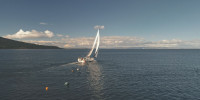
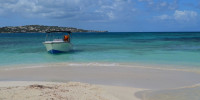
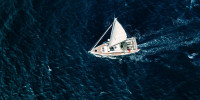
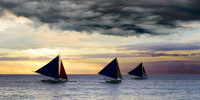
Comments
Erik J
So we’re just doing AI-generated texts now, huh?
Come on, at least try writing something yourself. This is just silly.
Marcus Whitby
So basically, “Avoid sailing anywhere. The world is chock full of dangers, everywhere.”
Heywoodj
” with the goal of ridding the internet of fluff.”
hmmm, doesn’t seem to be working.
Leave a comment